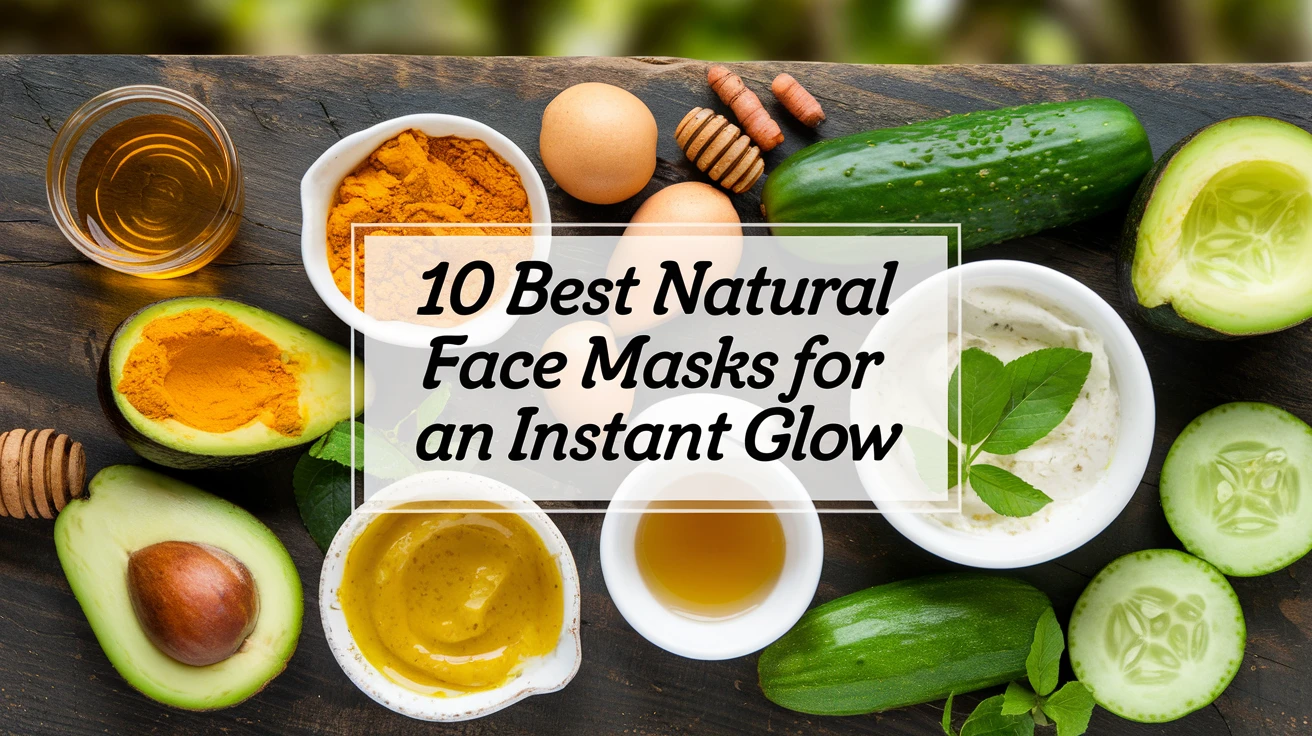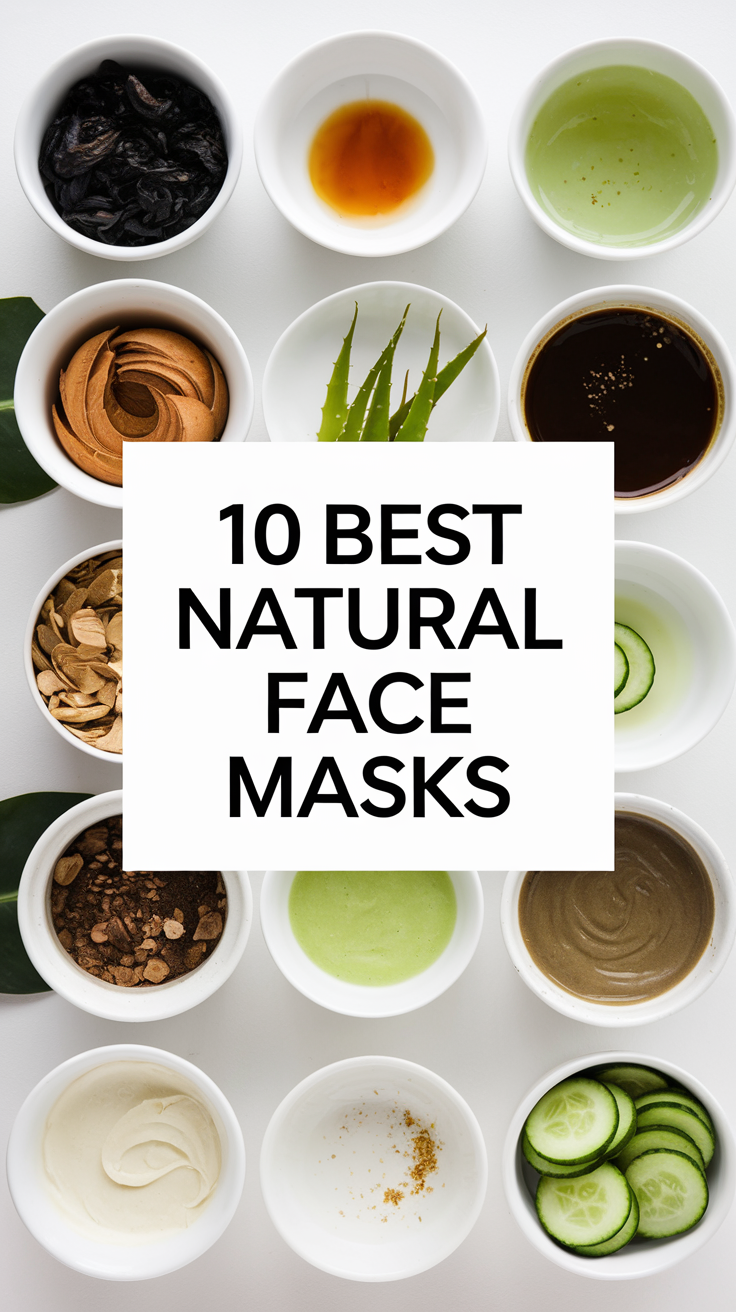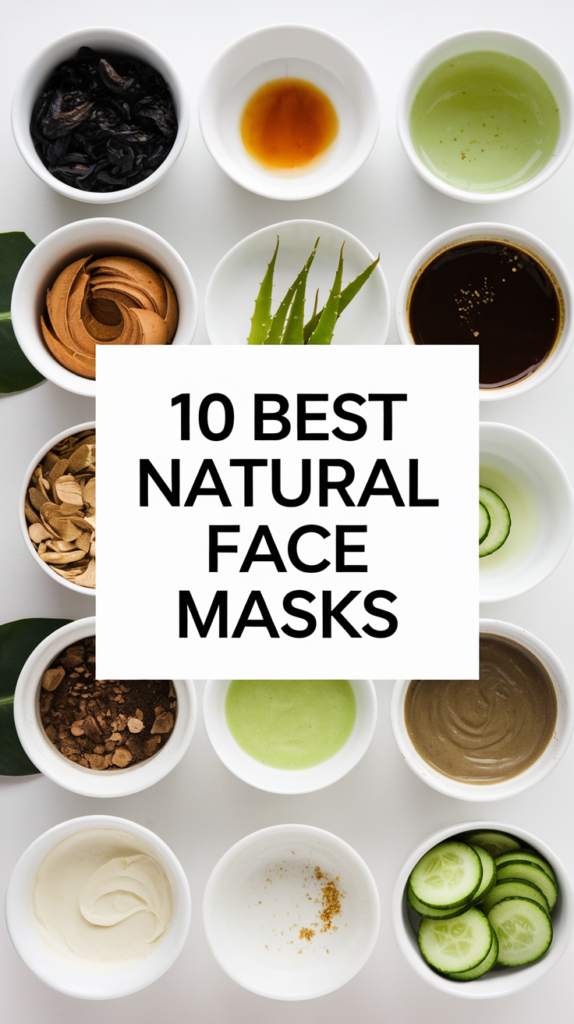
Are you tired of spending a fortune on commercial face masks that promise the world but deliver little? I was in the same boat until I discovered the transformative power of natural face masks. After years of battling sensitive skin and trying countless store-bought products, I’ve found that the best solutions often lie right in our kitchen cabinets. These natural face masks not only provide amazing results but also give you complete control over what you’re putting on your skin. In this comprehensive guide, I’ll share my top 10 natural face mask recipes that have consistently delivered that coveted healthy glow, all backed by both traditional wisdom and modern skincare science.
Why Choose Natural Face Masks?
Before diving into the recipes, let’s understand why natural face masks deserve a prime spot in your skincare routine. Through my journey as a skincare enthusiast and after countless conversations with dermatologists, I’ve learned that natural ingredients offer unique benefits that commercial products often can’t match.
Benefits of Natural Face Masks
- No harmful chemicals or preservatives
- Cost-effective and easily accessible ingredients
- Customizable according to skin needs
- Environmental friendly
- Rich in natural nutrients and antioxidants
Understanding Different Skin Types
| Skin Type | Beneficial Ingredients | Ingredients to Avoid |
|---|---|---|
| Oily | Clay, lemon, tea tree | Heavy oils, cream bases |
| Dry | Avocado, honey, oils | Astringents, alcohol |
| Sensitive | Aloe vera, oatmeal | Citrus, strong acids |
| Combination | Green tea, yogurt | Heavy butters |
10 DIY Natural Face Masks for Glowing Skin
1. Honey and Turmeric Brightening Mask
This golden combination has been my go-to for instant brightness. Mix 1 tablespoon of raw honey with 1/4 teaspoon of turmeric powder. The antibacterial properties of honey combined with turmeric’s anti-inflammatory benefits create magic for dull skin. I learned the hard way to wear an old shirt during application – turmeric stains are no joke!
2. Avocado and Oatmeal Hydrating Mask
Perfect for dry, winter skin, this mask combines half a ripe avocado with 2 tablespoons of ground oatmeal. The healthy fats in avocado provide deep hydration while oatmeal soothes irritation. Pro tip: make sure the avocado is perfectly ripe for easy blending.
3. Banana and Yogurt Anti-Aging Mask
Mash one ripe banana with 2 tablespoons of plain yogurt. This combination is rich in vitamins and lactic acid, perfect for gentle exfoliation and reducing fine lines. I discovered this mask during a kitchen experiment, and it’s become a weekly ritual.
4. Aloe Vera and Cucumber Cooling Mask
Mix 2 tablespoons of fresh aloe vera gel with grated cucumber. This duo is especially soothing after sun exposure or during hot summer days. Store any leftover mixture in an airtight container in the refrigerator for up to 3 days.
5. Clay and Apple Cider Vinegar Detox Mask
| Ingredient | Amount | Purpose |
|---|---|---|
| Bentonite Clay | 1 tablespoon | Deep cleansing |
| Apple Cider Vinegar | 1-2 teaspoons | pH balance |
| Tea Tree Oil | 1 drop | Antibacterial |
6. Coffee and Coconut Oil Energizing Mask
Combine 2 tablespoons of used coffee grounds with 1 tablespoon of melted coconut oil. The caffeine helps reduce puffiness while coconut oil moisturizes. I love using this mask during my morning routine for an extra wake-up boost.
7. Papaya and Lemon Brightening Mask
Mash 2 tablespoons of ripe papaya with a few drops of lemon juice. The natural enzymes in papaya gently exfoliate while lemon brightens. Remember to do a patch test first, as citrus can be sensitizing.
8. Egg White and Lemon Pore-Tightening Mask
Whisk one egg white with 1/2 teaspoon of lemon juice. This protein-rich mask helps tighten pores and control oil production. Always use fresh ingredients for this mask and never store leftovers.
9. Green Tea and Rice Flour Antioxidant Mask
Mix 1 tablespoon of green tea with 2 tablespoons of rice flour to form a paste. This combination provides gentle exfoliation while delivering potent antioxidants to the skin.
10. Tomato and Fuller’s Earth Clarifying Mask
Blend 1 small tomato with 2 tablespoons of Fuller’s Earth. This mask is particularly effective for oily and acne-prone skin, helping to reduce excess sebum and brighten the complexion.
Application Tips and Best Practices
Preparation Guidelines
- Always start with clean, freshly washed skin
- Perform a patch test 24 hours before using any new mask
- Use clean tools and bowls for mixing
- Apply masks with clean hands or a face mask brush
- Follow recommended application times strictly
Frequency of Use
| Mask Type | Frequency | Best Time to Apply |
|---|---|---|
| Hydrating Masks | 2-3 times/week | Evening |
| Exfoliating Masks | 1-2 times/week | Weekend mornings |
| Clay Masks | 1-2 times/week | After workouts |
| Brightening Masks | 2-3 times/week | Evening |
Storage and Shelf Life Tips
Storage Guidelines
- Store dry ingredients in airtight containers
- Keep refrigerated masks in clean, sealed containers
- Label containers with preparation dates
- Use within recommended timeframes
- Watch for any changes in color or smell
Common Storage Mistakes to Avoid
Remember my disaster with storing a banana mask? Learn from my mistakes! Never store masks containing fresh fruits or dairy products for more than 24 hours, even in the refrigerator. Always make these masks fresh for the best results and to avoid any potential skin reactions.
Conclusion
Natural face masks offer a wonderful way to pamper your skin while knowing exactly what you’re applying to it. Through my journey of experimenting with these masks, I’ve learned that consistency and proper application are key to seeing results. Start with one or two masks that align with your skin’s needs, and gradually explore others as you become more comfortable with the process. Remember, beautiful skin is a journey, not a destination, and these natural masks can be wonderful companions along the way.
Key Takeaways
- Natural face masks provide chemical-free skincare solutions using readily available ingredients
- Always perform patch tests and follow recommended application times
- Fresh preparation is crucial for maximum effectiveness
- Different skin types require different ingredients and application frequencies
- Proper storage and handling are essential for safety and effectiveness
Frequently Asked Questions
How long should I leave a natural face mask on?
Most natural face masks should be left on for 10-15 minutes. However, clay masks should be removed before they completely dry to prevent over-drying the skin.
Can I use these masks if I have sensitive skin?
Yes, but start with gentle ingredients like oatmeal, honey, or aloe vera. Always perform a patch test first and avoid ingredients known to irritate your skin.
How often should I use natural face masks?
Most masks can be used 1-2 times per week, depending on your skin type and the ingredients used. Pay attention to how your skin responds and adjust accordingly.
Can I prepare these masks in advance?
Most natural masks should be prepared fresh before each use. However, dry ingredients can be pre-mixed and stored in airtight containers.
What’s the best time to apply a face mask?
Evening is typically best, after cleansing and before your nighttime skincare routine. This gives your skin time to absorb the benefits without exposure to environmental stressors.
Can I combine different masks in one week?
Yes, but space them out appropriately and don’t use more than 2-3 different masks per week to avoid overwhelming your skin.
What should I do if I experience irritation?
Remove the mask immediately with cool water and apply a gentle, fragrance-free moisturizer. Discontinue use and consult a dermatologist if irritation persists.
Can I use these masks while pregnant?
Most natural ingredients are safe during pregnancy, but consult your healthcare provider first and avoid essential oils and certain herbs.
How do I know if a mask is working?
Your skin should feel refreshed, not irritated, after use. Results like improved texture and glow typically show after 2-3 weeks of consistent use.
Can I use these masks if I have acne?
Yes, but choose masks with antibacterial ingredients like honey or tea tree oil. Avoid heavy, oily ingredients that might clog pores.


